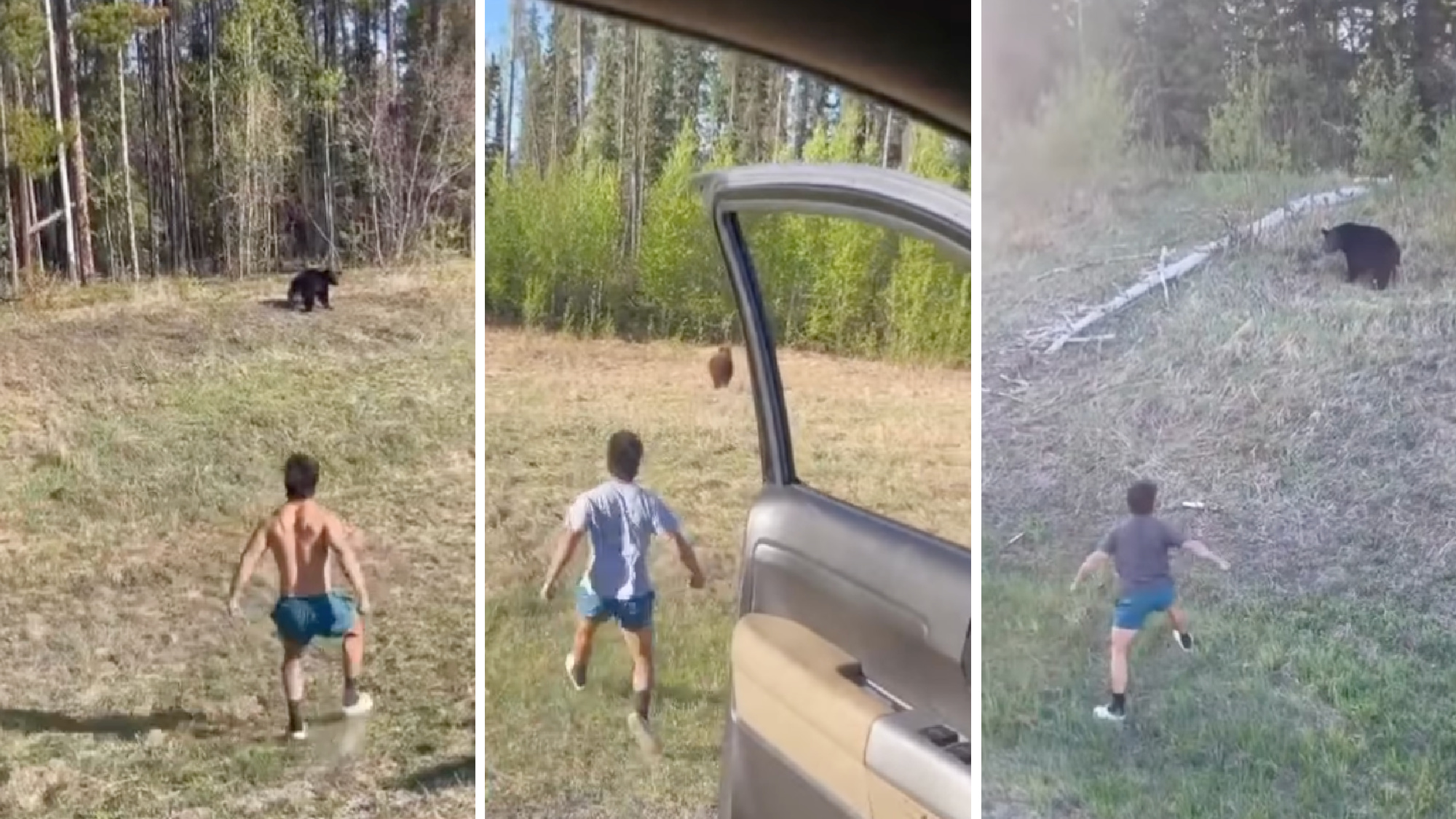If you’ve been active on social media lately, there’s a chance you’ve seen a series of blood-boiling videos of a young guy charging bears on the side of the road in an area that resembles Yellowstone National Park. In all three videos, posted by the tourist-policing Instagram account Tourons of Yellowstone, the bear-harasser crouches and flexes like a gorilla and runs right at the bears, making a noise that’s somewhere between a hoot and a bark. In two videos, the bear runs into the woods. In the third, the bear bluff-charges the harasser. He wears blue shorts, black socks, and white Crocs in all three videos. He is shirtless in the first video and rips his shirt off in the second, but doesn’t have time to strip in the third before he’s forced to flee.
The first video was posted on June 4.
The second video, posted on June 5.
The third video, posted on June 10.
The public outcry at the idiot’s behavior prompted the National Park Service to investigate the incidents. But the results of the investigation are frustrating for anyone who wants to see this dude charged with federal crimes. Not only were the clips not filmed in YNP, but they weren’t filmed anywhere in the Greater Yellowstone Ecosystem or any other national park, YNP chief of public affairs Morgan Warthin tells Outdoor Life in an email.
“Yellowstone National Park received reports of a video depicting a man caught on camera harassing bears. The park takes all reports of animal harassment very seriously,” Warthin writes. “The investigation led by park law enforcement officers recently revealed that the incidents did not occur in Yellowstone, the Greater Yellowstone Ecosystem, or in any other national park. We have no additional information to share.”
This finding adds a layer of complexity to the incidents. If this guy (and his buddy giggling behind the camera) didn’t film these moronic stunts in a national park, then they could have happened almost anywhere in North America. The only defining characteristics of these videos are that they were filmed in an area with vehicle access, pines, and black bears. The clips don’t reveal any license plates or names. Even the harasser’s t-shirts aren’t fully visible, thanks to the low quality of the footage.
While his identity remains unknown, some commenters on the videos call for anyone with information to report it to the appropriate authorities. Other commenters just call for the next bear this guy harasses to maul him. Only a few people believe what he’s doing is perfectly legal. Those folks should read the Code of Federal Regulations. Title 36, Chapter 1, Part 2.2 prohibits the “feeding, touching, teasing, frightening or intentional disturbing” of wildlife. Punishment includes fines and up to six months in prison.
Wildlife Harassment in a Busy Yellowstone
These videos originally emerged among a spate of illegal human-wildlife interactions in Yellowstone that have resulted in death for some of the animals. Two black bears were struck and killed by vehicles on Highway 191 on May 28. Clifford Walters was convicted of one count of disturbing wildlife on May 31 after he tried to “help” a bison calf that was struggling in a river. The calf was euthanized as a result of the incident.
Over Memorial Day weekend, a couple drove what they thought was an abandoned elk calf to the West Yellowstone Police Department. (The calf later ran into the woods and its condition is unknown.) Countless other videos of visitors standing way too close to bison, bears, elk, and fragile natural features continue to populate the Tourons of Yellowstone feed.
Read Next: Poachers Caught with 71 Fish Stuffed in Their Backpacks, Including Trophy Bass
The problem is exacerbated by record-high visitor counts in recent years. Total visitation for 2023 is down 12 percent from 2022, but also up 12 percent from 2019. These numbers indicate that, while people aren’t visiting the park as much as they were in the immediate aftermath of COVID, visitation is still higher than it was pre-pandemic.

